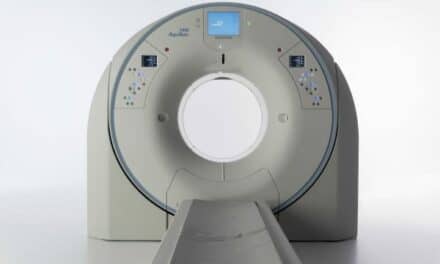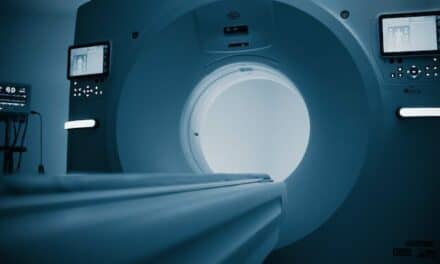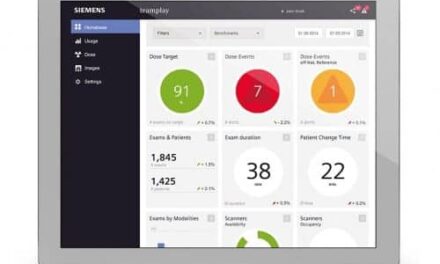Toshiba America Medical Systems showcased its Aquilion One CT systems earlier this week at the American College of Cardiology’s annual meeting in Chicago. The systems, which help clinicians plan and perform transcatheter aortic valve replacement (TAVR) procedures, deliver the visualization needed during planning, officials for the manufacturer say.
The Aquilion One systems feature 0.5 mm slices and come in three configurations: the Aquilion One 320, the Aquilion One 640, and the Aquilion One Vision edition. To expedite the TAVR planning process, the systems feature wide-detector volumetric cardiac capabilities and Toshiba’s adaptive diagnostics technology, such as Variable Helical Pitch, which automatically changes from an electrocardiography (ECG)-gated to a non-ECG-gated acquisition during a helical scan. This, in turn, reduces intravenous contrast and radiation dose. Toshiba’s Vital CT TAVR planning application can also be utilized to visualize and measure vascular anatomy for the evaluation, treatment, and follow up of aortic vascular disorders.
All Aquilion One systems comply with the National Electrical Manufacturers Association’s XR-29-2013 guidelines and feature dose-reduction technologies, including Adaptive Iterative Dose Reduction 3D Enhanced.
Dominic Smith, Toshiba’s senior director of CT, PET/CT, and MR, says the systems offer clinicians one “unique” advantage: the ability to acquire anatomical and functional data in a single heartbeat. “The Aquilion One family offers clinical and operational solutions that make work flow and contribute to many cost efficiencies by making pre-procedure TAVR planning more efficient,” he adds.
For more information about this product line, visit Toshiba America Medical Systems.





